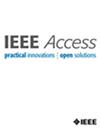T3SSLNet: Triple-Method Self-Supervised Learning for Enhanced Brain Tumor Classification in MRI
IF 3.4
3区 计算机科学
Q2 COMPUTER SCIENCE, INFORMATION SYSTEMS
引用次数: 0
Abstract
Classification of brain tumors from MRI images is crucial for early diagnosis and effective treatment planning. However, there are still obstacles to overcome, including low image quality, sparsely labeled data, and variability in tumor characteristics. In this study, we explored the use of self-supervised learning techniques to improve the classification performance for brain tumors. Specifically, we tested three SSL approaches SimCLR, MoCo, and BYOL, with ResNet-50 as the backbone architecture on a newly constructed dataset created by combining five public datasets. We further extended our work by integrating EfficientNet to evaluate its computational efficiency, demonstrating its feasibility for low-processor systems. We introduce T3SSLNet, a novel framework consisting of four key components: the imaging spectrum enhancement block for data augmentation, the Frozen Feature Extractor block for hierarchical feature extraction, Neural Representation Projection Learning block for contrastive-positive pair learning, and Unfrozen Classification block for tumor classification. Our experimental results paired with ResNet-50 indicate that, without fine-tuning, MoCo achieved the highest accuracy at 95.76%, followed by SimCLR at 92.25% and BYOL at 81.80%. Following fine-tuning, BYOL showed a significant improvement, reaching 96.42%, while MoCo and SimCLR reached 96.87% and 97.02%, respectively.T3SSLNet: MRI增强脑肿瘤分类的三种方法自监督学习
从MRI图像中对脑肿瘤进行分类对于早期诊断和有效的治疗计划至关重要。然而,仍有一些障碍需要克服,包括低图像质量、稀疏标记数据和肿瘤特征的可变性。在这项研究中,我们探索了使用自监督学习技术来提高脑肿瘤的分类性能。具体来说,我们测试了三种SSL方法SimCLR, MoCo和BYOL,以ResNet-50作为骨干架构,在一个由五个公共数据集组合而成的新数据集上。我们进一步扩展了我们的工作,通过集成effentnet来评估其计算效率,证明其在低处理器系统上的可行性。我们介绍了T3SSLNet,这是一个由四个关键组件组成的新框架:用于数据增强的成像频谱增强块,用于分层特征提取的冻结特征提取块,用于对比正对学习的神经表示投影学习块,以及用于肿瘤分类的解冻分类块。我们的实验结果与ResNet-50配对表明,在没有微调的情况下,MoCo的准确率最高,达到95.76%,其次是SimCLR的92.25%,BYOL的81.80%。经过微调后,BYOL有了明显改善,达到96.42%,MoCo和SimCLR分别达到96.87%和97.02%。
本文章由计算机程序翻译,如有差异,请以英文原文为准。
求助全文
约1分钟内获得全文
求助全文
来源期刊

IEEE Access
COMPUTER SCIENCE, INFORMATION SYSTEMSENGIN-ENGINEERING, ELECTRICAL & ELECTRONIC
CiteScore
9.80
自引率
7.70%
发文量
6673
审稿时长
6 weeks
期刊介绍:
IEEE Access® is a multidisciplinary, open access (OA), applications-oriented, all-electronic archival journal that continuously presents the results of original research or development across all of IEEE''s fields of interest.
IEEE Access will publish articles that are of high interest to readers, original, technically correct, and clearly presented. Supported by author publication charges (APC), its hallmarks are a rapid peer review and publication process with open access to all readers. Unlike IEEE''s traditional Transactions or Journals, reviews are "binary", in that reviewers will either Accept or Reject an article in the form it is submitted in order to achieve rapid turnaround. Especially encouraged are submissions on:
Multidisciplinary topics, or applications-oriented articles and negative results that do not fit within the scope of IEEE''s traditional journals.
Practical articles discussing new experiments or measurement techniques, interesting solutions to engineering.
Development of new or improved fabrication or manufacturing techniques.
Reviews or survey articles of new or evolving fields oriented to assist others in understanding the new area.
 求助内容:
求助内容: 应助结果提醒方式:
应助结果提醒方式:


